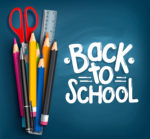
Menu
It’s almost back to school time! Again. So soon?
If you’re an experienced secondary science teacher with all your ducks in a row, this post probably won’t interest you much. But, if you are . . .
. . . then, here you go.
I was so nervous my first day of teaching. Honestly, I had butterflies (usually felt more like pterodactyls) on the first day of school every year for 18 years. I LOVED teaching, but I am an introvert, so I was always pushing myself outside my comfort zone and the first day was the toughest. But, being prepared made things so much easier for me.
And, since I like to make lists, I’m going to give you my list of 10 things to do BEFORE the first day of school. I developed this over many years of trial and error. I hope it’s helpful.
I always used Easy Grade Pro to make seating charts that put the students in alphabetical order (with the exception of students who needed accommodations). And, here’s why:
The way my room was set up, I had 6 rows of desks up front and 6 hexagonal lab tables in the back. So, each row was a lab group. Easy peasy. And, I mixed up the assigned seats every few weeks – about twice a quarter – so everyone got to move around and because I liked to switch up lab groups. Later in the year, I could sort students by their class averages so I had a nice heterogeneous mix in each group.
If you don’t have a program that creates seating charts for you, make your own Excel spreadsheet with big boxes and write the names in. Or, draw the boxes by hand. It’s worth every second!
I even had seating charts for my juniors and seniors. I let them choose their seat, but they had to be in that seat every day so I could use the chart to check attendance. If any issues came up that made me think they should be sitting somewhere else, I just discussed it with them until they agreed with me. 🙂
A HUGE component of my classroom management strategy is to pre-empt or avoid trouble whenever possible. This starts with your preparations before the first day of school. Students will see that you care about what you do and that you’ve got your act together.

I know I do. So, I broke this list down a bit more and put it in a checklist format. Download yours for FREE here: Back-To-School Checklist for Secondary Science Teachers
Do you have other items on your MUST DO before school starts list? Let me know in the comments.
Have a great school year!
Carla

Sign Up for the Science Island Newsletter and Free Resource Library.
Then check your email to confirm your subscription.